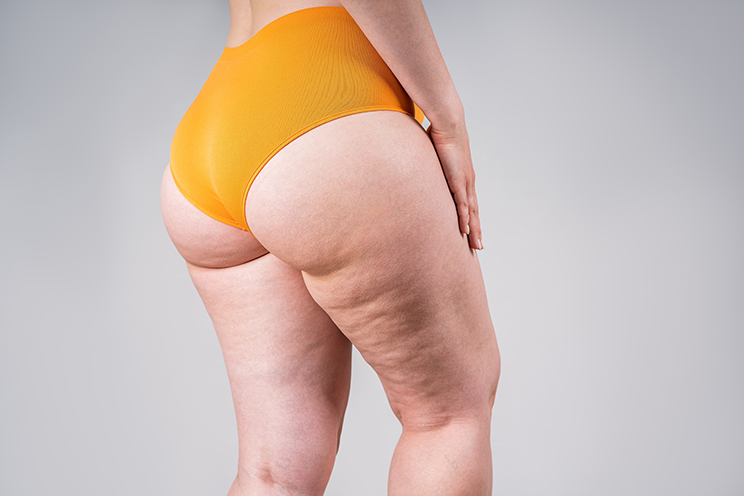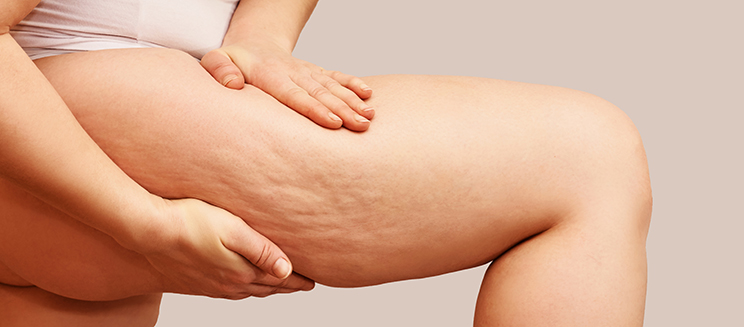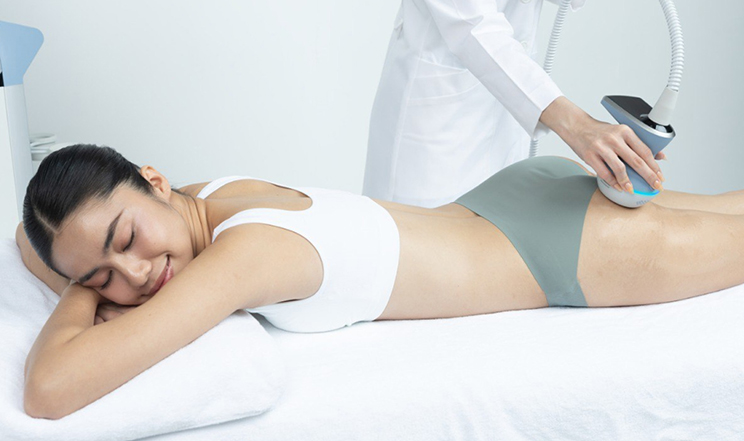What is Cellulite?

Cellulite refers to the uneven texture of the skin, typically found on the thighs, buttocks, abdomen, and arms. It forms when fat deposits push through the connective tissue beneath the skin, creating a dimpled or orange peel-like surface. For many, cellulite is merely a cosmetic concern, but severe cellulite on the thighs or buttocks can significantly affect self-esteem and comfort.
It is important to note that cellulite is not exclusively linked to being overweight; even people of normal weight can experience it. Cellulite itself is not harmful to health, but in some cases, it can be associated with a more serious condition, such as cellulitis, which requires medical attention.
Cellulitis, which can particularly occur in the lower extremities, is a bacterial infection that affects the underlying tissue. It differs from regular cellulite as it involves symptoms like heat, swelling, redness, and pain, especially in the legs and thighs. The symptoms of cellulitis can resemble erysipelas, but distinguishing between the two often requires medical evaluation and treatment, as in severe cases, the infection can spread and cause complications.
How Does Cellulite Develop?
There are several reasons for the development of cellulite, related to genetics, age, hormonal changes, and lifestyle. Skin structure varies individually, and genetics can influence how much fat accumulates under the skin and how tightly the connective tissues are woven. Aging reduces the skin's elasticity and weakens connective tissues, allowing fat to accumulate more easily, leading to an uneven skin appearance.
The hormone estrogen affects cellulite formation, which explains why women are more prone to it than men. Changes during pregnancy, hormonal contraception, and menopause can increase cellulite and even worsen its appearance, especially on the thighs and buttocks.
Lifestyle also plays a significant role in the development of cellulite. An unhealthy diet high in sugar, salt, and saturated fats can increase fat tissue and contribute to cellulite formation. Additionally, lack of exercise can reduce blood circulation and metabolism, making it harder for the body to eliminate fat tissue and toxins. Constant sitting and lack of muscle activity can weaken the attachment between the skin and muscle, worsening the uneven skin texture. For these reasons, cellulite removal is not a simple task but often requires lifestyle changes and a comprehensive treatment approach.

Different Types and Stages of Cellulite
Cellulite can be categorized into different types and stages based on its appearance and severity. Understanding these differences helps in determining the most suitable treatment method.
- Soft Cellulite – This is the most common form of cellulite. Soft cellulite is widespread and often slightly uneven, typically appearing on the thighs and buttocks. It is usually looser and more mobile than hard cellulite, and it may be associated with excess fluid retention in the tissues.
- Hard Cellulite – This type of cellulite is more compact and may feel firm under the skin. It commonly occurs in the thigh area and is more tightly attached to the skin, making it more challenging to eliminate. Hard cellulite is often less visible than soft cellulite but can be harder to remove due to its dense structure.
- Edematous Cellulite – This is a rarer and typically more painful form of cellulite caused by fluid retention in the tissues. It can lead to swelling and tenderness, especially in the lower limbs, making the affected area feel sore and uncomfortable. This type of cellulite can be associated with subcutaneous inflammation and may require treatment to manage the swelling and support lymphatic circulation.
The progression of cellulite can be observed through four different stages. In the first stage, cellulite is not visible or is only noticeable when the skin is pinched. In the second stage, cellulite is usually more visible, especially when standing. In the third stage, it becomes clearly noticeable, and in the fourth stage, the cellulite is very pronounced, with an uneven skin surface, making treatment more challenging at this advanced stage.

Cellulite Treatment
There are various methods available for treating cellulite, some of which focus on improving the appearance of the skin, while others help promote blood circulation and reduce fluid retention. Here are some of the most effective methods:
- EMTONE: Targets all five underlying causes of cellulite. It breaks down fat, improves circulation, and tightens the skin — visibly reducing cellulite and smoothing away the orange-peel look.
- EXION Body: Utilizes targeted ultrasound and monopolar radiofrequency to stimulate the production of hyaluronic acid, collagen, and elastin. This treatment effectively reduces cellulite, tightens the skin, and improves its texture.
- EMSCULPT NEO: A device-based treatment that combines radiofrequency with muscle-stimulating technology. It reduces fat tissue, eliminates cellulite, and simultaneously tones the muscles, enhancing the overall appearance of the skin.
- Mesotherapy: A treatment where firming compounds are injected into the skin, reducing cellulite and smoothing the skin's surface from within.
- Cryotherapy: Cold treatment that constricts blood vessels, promoting fluid mobility and reducing swelling.
- Lymphatic Drainage: This treatment enhances blood circulation and removes excess fluid from the body, reducing swelling and giving the skin a smoother appearance.
- Dry Brushing: Brushing the skin in circular motions to stimulate blood circulation and improve skin texture, helping to reduce the appearance of cellulite.
- Diet: In the early stages, cellulite can be reduced by following a healthy diet rich in fiber and antioxidants.

Combination Treatments
- EMSCULPT NEO + EXION Body: Combination treatment is the best way to see results! EMSCULPT™ NEO helps build muscle, burn fat, and tighten the body, while EXION™ Body smooths cellulite, removes localized fat deposits, and stimulates the production of hyaluronic acid, collagen, and elastin in the treated area.
These treatments, combined with lifestyle changes, can help reduce the appearance of cellulite or even eliminate it completely.
MESQ®
DoctusPlus Oy:n aputoiminimi
Yritys
DoctusPlus Oy
Y-tunnus
3154088-6
Käyntiosoite
Itämerenkatu 11-13 F, 00180 Helsinki
Puhelin
Sähköposti
Aukioloajat
Ma – Pe 11:00 – 19:00